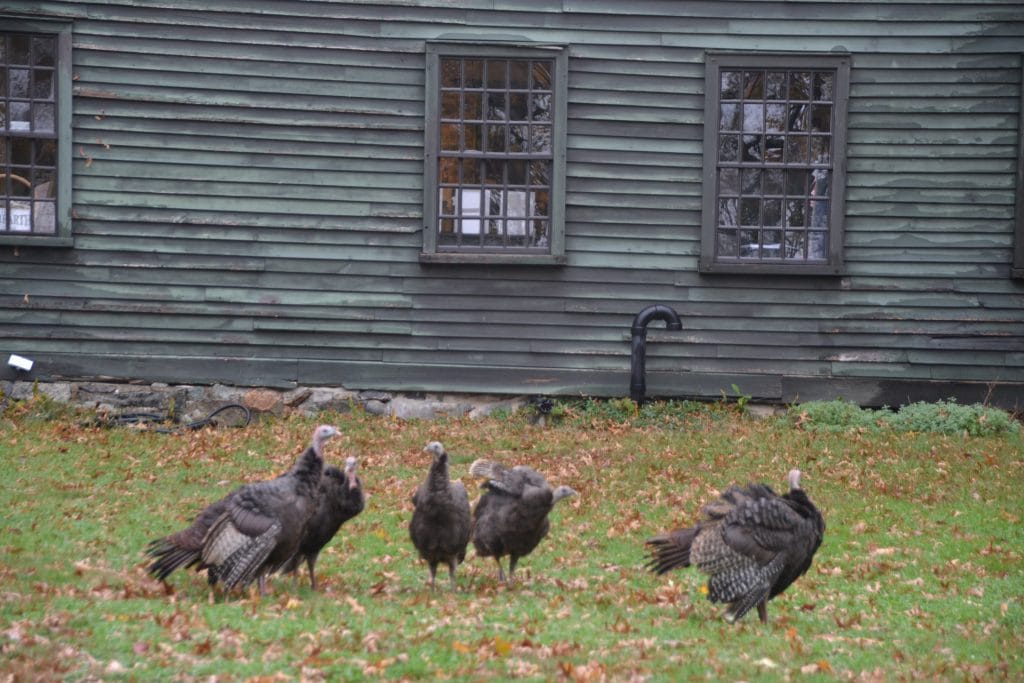Here’s what’s blooming in town this week to make your walks more enjoyable
By Laura Eisener
We are seeing more colorful leaves still on the trees than we get to enjoy most Thanksgivings. Leaves are clinging a little later on most trees because of the warm weather of October, but it is also true that Thanksgiving is earlier than usual. The fourth Thursday of November is often the last week of the month, but since this month started on a Wednesday, the holiday fell on nearly the earliest possible date. It can fall on November 22, which will happen in 2029. The full moon of November, often called the beaver moon, will occur this year on Monday, November 27.
A new hardiness zone map was released this fall, after climate change and detailed studies of average winter temperatures suggested that the 2012 revision was no longer accurate for some parts of the country. Saugus is presently zone 6b. More information can be found on the US Department of Agriculture’s website: USDA Plant Hardiness Zone Map, 2023; Agricultural Research Service, U.S. Department of Agriculture – accessed from https://planthardiness.ars.usda.gov/
Mini red turban squash (Cucurbita maxima ‘Mini-Red’) is displayed on a porch table in Lynnhurst. It looks surprisingly like a mushroom, and the small size makes it popular for ornamental use. The leaves from the nearby maple trees – red maple (Acer rubrum) and silver maple (Acer saccharinum) – are still showing colorful foliage this week. In many gardens, Japanese maple (Acer palmatum) leaves have turned brown before falling in the last few years due to early snowstorms, but this fall many are showing bright red color.
A flock of wild turkeys (Meleagris gallopavo) at the Saugus Iron Works seem very much at home in the photo above. They would find the site today much more pleasant than they would have found the area in the 17th century, when there would have been unrelenting pounding from the trip hammer, the 24/7 roar of the blast furnace and the busy daily activity from the ironworkers and their families in the surrounding neighborhood.
The Saugus Iron Works opened in 1646 and operated for over 20 years. Wild turkey populations in New England were much reduced already by that time. According to MassWildlife, wild turkeys went into decline after European colonization, largely due to habitat loss but also hunting until the last wild turkey in Massachusetts was killed in 1851. In the 1970s biologists brought turkeys to the Berkshires from New York to try to reestablish wild flocks there. In the next few decades, due to turkeys being reestablished into eastern counties from the west and from adjacent states, turkeys began to repopulate eastern Massachusetts and are fairly common today.
The turkeys are frequent visitors to the Iron Works neighborhood. While the buildings are closed for the season, the grounds are open year-round to people as well as wildlife. The turkeys wander around town, visiting several neighborhoods and foraging for food. They have an omnivorous diet, which at this time of year may include acorns, hickory nuts, beechnuts, walnuts, small fruits, wild grains and grass seeds, as well as animals, such as spiders, small insects, worms, snails and salamanders. Turkeys are members of the pheasant family (Phasianidae).
Indoors, bouquets and potted fall flowers help set the mood for traditional Thanksgiving dinners. Sunflowers are still popular for fall, and the cut stems on this table have taken on some extra vibrant red and orange colors due to a reddish-purple food coloring in the water. When taken up by the stalks, the blossoms and sometimes the leaves would take on that added color after a few days. Potted plants will last somewhat longer, and hardy mums can even be planted outdoors after Thanksgiving. We have a few more weeks before the ground freezes, so there is still time to plant. Two of the plants on this table, different varieties of chrysanthemums, are good candidates for outdoor planting, but the third plant (Kalanchoe blossfeldiana ‘Pumpkin Spice’) is not hardy enough for our climate outdoors and would have to remain a houseplant. Florist’s kalanchoe as the species is often called, can produce flowers in pink, red, orange, yellow or white, but the two-tone orange and yellow ‘Pumpkin Spice’ variety is somewhat new and certainly shouts fall in its name and color combination!
Editor’s Note: Laura Eisener is a landscape design consultant who helps homeowners with landscape design, plant selection and placement of trees and shrubs, as well as perennials. She is a member of the Saugus Garden Club and offered to write a series of articles about “what’s blooming in town” shortly after the outbreak of the COVID-19 pandemic. She was inspired after seeing so many people taking up walking.
See more photo highlights at: www.Facebook.com/advocate.news.ma






